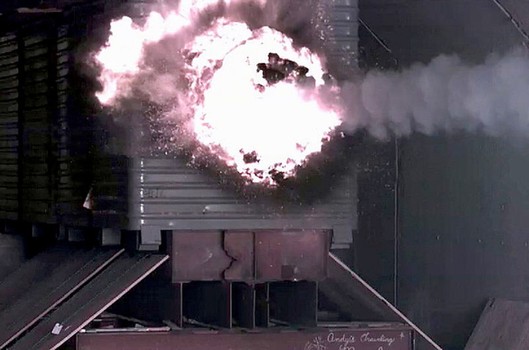Navy ships of the future are going to have the kind of advanced weaponry that was once considered the sole province of science fiction. The Navy has learned quite a lot from the laser cannon mounted on the USS Ponce, currently deployed in the Persian Gulf. In the meantime, according to a Friday story in the Washington Post, a prototype of the first electromagnet rail gun was unveiled publicly for the first time at the Navy’s Future Force Science and Technology Expo at the Washington Convention Center.
The laser installed on board the Ponce has already shot down a number of aerial drones in real world conditions. The Navy has also discovered that more work needs to be done to protect such laser cannon from the corrosive effects of sea air and sea water, the latter of which constantly washes over the bow of the ship during rough conditions. Next generation lasers will be able to shoot down missiles and planes, as well as drones, and to destroy fast attack boats of the kind that attacked the USS Cole shortly before 9/11.
The rail gun has been demonstrated to fire a projectile, using electromagnetic pulses, at Mach 7 for a range of 110 miles. It would give s Navy warship the capability of striking targets over the horizon, other ships or inland targets while remaining relatively unmolested. Almost as important, the projectiles it would fire would be far cheaper than a missile.
The one limiting factor standing in the way of fleets of warships armed with laser cannon and railguns is the question of power. Each of these weapons takes a lot of energy with which to operate, even on ships with nuclear generators. The Navy is going to have to develop ways to generate enough electricity to power these weapons of the future before they can be used in combat.















